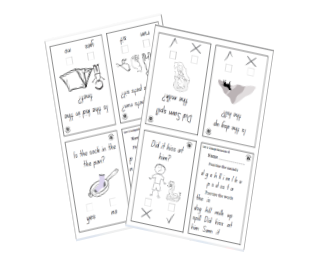Resourcing Learning For Our Spotlight Children

Within any class, there will be a range of learners. Some of our students will be fast lane learners, picking up everything we have to offer and running with it. Other students need help every step of the way. They may struggle with memory, attention, phonemic awareness or language production. These students usually work at a slower pace than their peers, requiring more repetitions to commit content to long term memory. They benefit from having learning broken down into smaller chunks with frequent, focused practice sessions to consolidate learning. It is important that we shine a spotlight on these students to ensure that they receive appropriate, timely and effective instruction to enable them to maintain a pace of learning that gives them a year’s worth of learning for a year at school. While maintaining sufficient intensity for strong learning takes focus, it is not out of the realm of possibility for any school. In fact, we should expect that every child can receive the instruction they need to learn to read and write during the course of the school day.

Resourcing learning for our spotlight students can, however, be a little challenging. Many teachers report that one of the difficulties lies in having enough books and other learning materials to continue to provide variety for students. Students who take longer to be ready to increase the complexity of texts often run out of reading material. They read all of the available titles the school has but are not yet ready to move to the same level of text complexity as their peers.
Some of these challenges can be alleviated by:
- Remembering that children really should be reading texts more than once. Three readings of any text is great to help children build fluency and understanding.
- We are broadening our expectations of what constitutes reading material. Reading practice does not only have to take the form of a printed book. Sentence level reading practice, mini books, texts printed on A4 pages and on-screen reading can all be helpful. The important thing is to ensure that you aren’t asking these students to read things that they haven’t learned yet.
 Simple resources can be a part of making sure that you have enough materials for students to read. These are available from The Resource Room.
Simple resources can be a part of making sure that you have enough materials for students to read. These are available from The Resource Room.
- Sharing resources across classrooms. Each teacher does not need to have their own full set of texts and resources. Having a central set of resources that are shared between classrooms means that you can make your resource budget stretch further. Resourcing Learning For Our Spotlight Children
- Prioritising building up stocks of decodable texts from a range of sources. Each set of decodables has its own strengths. Building up stocks for a range of series provides variety. Purchasing both fiction and non-fiction texts means that students have experience in reading a range of texts and can begin to choose texts according to their interests. It is also important to provide high-interest, more easily decodable texts for older students. It may take several years to build this stock, but it is a worthwhile investment. This is especially true when we remember that it is far more cost effective to support students well in the early years than it is to provide year upon year of intervention.
Finally, it is important to remember that word level practice is critical for overall reading development. Children must both read and spell at word level every day and then at sentence level once they are able. Much progress can be made through a strong focus on word and sentence level reading and writing. This can be tricky when we have been told that text level reading is the main way to improve fluency and comprehension. While this is an important part of any teaching, ensure that you give enough time for word and sentence level work.
Creating an inclusive and equitable classroom environment is every teacher and school’s responsibility. Resourcing is a key part of this.
To source a range of simple resources, visit The Resource Room here.

 Jocelyn Seamer Education
Jocelyn Seamer Education
0 comments
Leave a comment